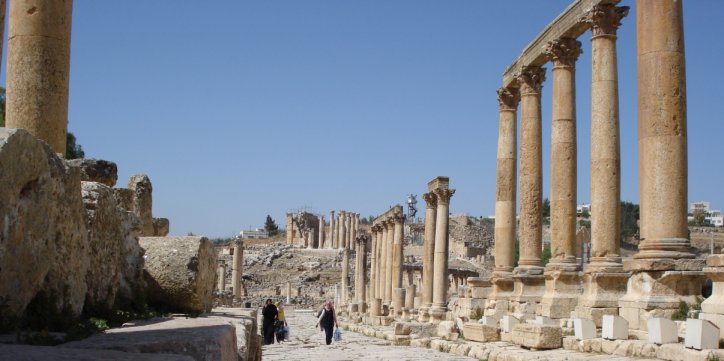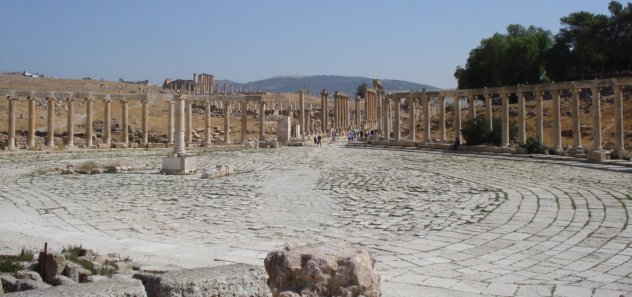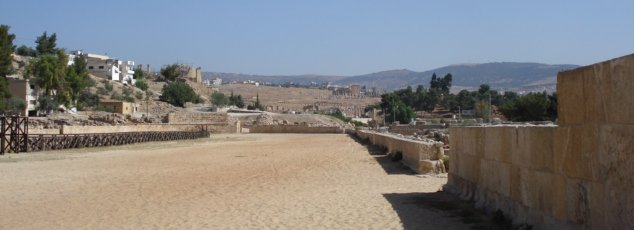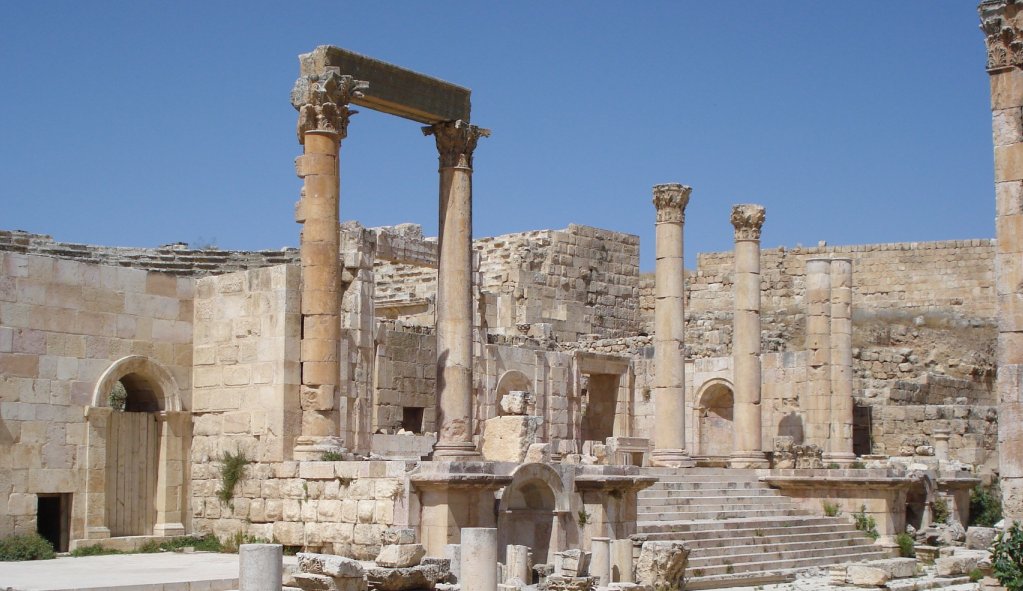
“In the second century of the Christian era, the Empire of Rome comprehended the fairest part of the earth, and the most civilised portion of mankind. The frontiers of that extensive monarchy were guarded by ancient renown and disciplined valour. The gentle but powerful influence of laws and manners had gradually cemented the union of the provinces. Their peaceful inhabitants enjoyed and abused the advantages of wealth and luxury.” This is the opening line of Gibbon’s “Decline & Fall of the Roman Empire.” Visiting the ruins of the once great city of Jerash gave us something to think about.
Below is Hadrian’s Arch. The Emperor Hadrian traveled a lot and evidently erected arches wherever he went. This is the entrance to Jerash.

The second century was indeed a great time. Pax Romana has created the world’s first globalization. Like today, diverse peoples mixed in a world market and a type of world system. Greek was the language of educated commerce and Latin was the language of the law. The world would not really see the recreation of this sort of trading system until 19th century. English now plays the world language role of ancient Greek & Latin. Our situation is like that of the Roman Empire in the 2nd century and like them, we think it will never really end.

Jarash shows the breadth of Roman civilization. It was nowhere near the center of the empire. It was not a key Roman city, but Roman civilization reached here as it did in Petra. Look at the pictures of this ordinary Roman town and imagine how it must have been.
I suppose it was a lot like today. People hangin around selling trinkets, calling out “Mr. Where you from? Rome. Rome number one.”
Below – Yay Rome

The wonder of Rome, however, was not in only the buildings you see here. A great part was in the “software” – laws and administration and much of physical base of Rome’s greatness was literally on or under that ground. Roman roads tied the Empire together. You can still walk on Roman roads and bridges from here on the edges of the Arabian Desert all the way to Hadrian’s Wall on the edge of Scotland. It was the Internet of the times.

Under the ground was something as astonishing – water works. Many Roman cities sat in semi arid places. The Romans brought in water from distant mountains and provide sewage systems to take out the waste. When the Empire collapsed, so did this infrastructure and Roman towns shrunk and sometimes disappeared.

Above is the Hippodrome, home to chariot races.
Imagine the Barbarians, scratching their keisters in the forums of Roman cites wondering where that water in the fountain is coming from and knowing they would be unable to keep the system running. When the Germanic tribes in the west or the Arabs in the east conquered Roman territory, they did not usually intend to destroy everything Even the Vandals, despite their fierce reputation, tried to keep things going. But as the Roman engineers and administrators died out, w/o suitable replacement, the light of civilization dimmed, not all at once. It was more like breaking up a campfire and letting the isolated embers of a fire gradually die. The empire was a network and the parts nourished each other. Without the network you get Jerash – beautiful ruins but dead as the rocks around them.

The other thing you learn when visiting abandoned cities is that cities are not forever. I think about that in relation to a great American city like New Orleans. Much of that city will need to be abandoned soon and returned to the cypress and tupelo. The engineering required to keep a below seawater district dry is just not worth the ecological harm. But – as usual – I digress.

We had a really good visit to Jerash. This link has a few more details.
